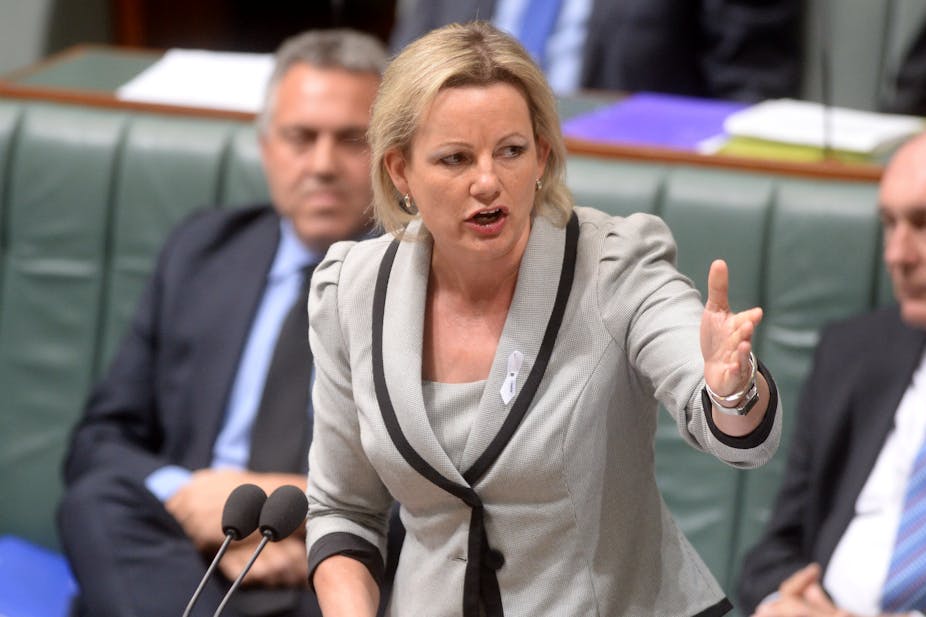As the 2015 parliamentary year approaches, The Conversation is examining five key policy areas that have a new minister in charge: health, immigration, defence, social services and science. Today we begin with health, and look at what’s on minister Sussan Ley’s agenda in 2015 – and what should be.
Australia does well in terms of health outcomes and ranks high internationally. However, the health system faces a number of pressures. These include rising demand due to an ageing population, increasing consumer expectations and growing burden of complex chronic health conditions.
All of this is leading to rising expenditure on health and increasing pressure on government budgets. Commonwealth health expenditure is estimated to increase by 3.9% in real terms from 2014-15 to 2017-18.
Australia also faces equity issues. Disadvantaged groups such as Indigenous Australians, those on low incomes and people who live in rural and regional areas are often unable to access high-quality care in a timely fashion.
The current system in Australia is no longer fit for purpose. It does not function well for those with complex and chronic conditions, such as heart disease and diabetes, who often require services from a number of different health providers.
The lack of connection and co-ordination is exacerbated by different tiers of government, which are often criticised for cost-shifting between primary (general practice, which the Commonwealth funds) and secondary (hospital) care, which the states manage. The system in Australia is fragmented and focused on provider needs rather than those of the patient.
The current Commonwealth government’s record on health policy tends to be focused largely on short-term financial gain. The abolition of a number of agencies and continued cuts in public health and preventive services may well reduce spending over the shorter term, but could prove costly over the longer term.

The decision to take funding from Indigenous programs and move Indigenous affairs to the Department of Prime Minister and Cabinet seems like a backwards step that will have significant impacts on an already disadvantaged group.
The decision to disband Medicare Locals to Primary Care Networks was made without any real evidence base and is estimated to cost A$112 million.
The proposed GP co-payments would hit vulnerable groups the hardest, and increase pressure on hospitals. GPs act as gatekeepers to more expensive care and treating early can stop the development of more serious conditions.
Under pressure from lobby groups, the government has shelved many of its suggested GP changes. This is welcomed in most camps, as is Health Minister Sussan Ley’s promise of a more consultative process to explore future reform options.
But consultation needs to go beyond just a select few groups or individuals and draw on a number of viewpoints, which need to be evidence-based. This is, after all, what makes for good public policy.
There is compelling evidence internationally that integrated health systems – with a strong primary care focus that puts the consumer at the heart of decision-making – are more efficient and have better patient outcomes than fragmented systems. Having pooled budgets can reduce bureaucracy and streamline care pathways, leading to a more effective and efficient health system.
But while there are some instances of Australia’s Commonwealth and state governments transferring funds for health, there is little by way of pooling funds and combined decision-making. Instead, Australia’s funding models reward activity and volume, rather than outcome and value. This means services tend to focus on a “sickness” rather than a “wellness” model of care.

It is unlikely that current or future governments will radically change health funding models. However, the way funds are distributed around the system should be a key policy focus.
The new Primary Health Networks, for instance, are set to take on a more developed role in the commissioning and procurement of services (such as GP and hospital care). This could provide an opportunity to focus on more integrated models of care and commissioning health services that focus on outcomes rather than volume.
Pooling state and Primary Health Network budgets and focusing on joint commissioning of integrated services would be a major advance on the current siloed approaches to funding and service delivery. However, this would involve commitment from both state and Commonwealth governments and require a bipartisan approach for success over the longer term.
Integration and procurement of services that focus on wellness rather than sickness would also require a different kind of service provision – and this could see some services being radically changed or disbanded. As we’ve learnt from health systems abroad, reconfiguring services and dis-investing in others is a difficult process. It requires strong leadership and a high level of expertise in population planning, procurement, contract management and governance processes.
Ley needs to develop policy that places the consumer at the centre of health, providing patients with the “right care at the right place in the right time”. This will require working with stakeholders and having a stronger dialogue with the public about the costs of health care and their experiences accessing quality health services.
We know from the past that structural and cultural change can take time. This is often something that governments don’t have, given the short election cycle. But if we are to have a health system that provides high-quality, sustainable care, governments and political parties (both federal and state) need to agree on a long-term approach to reform.
This in the first article in The Conversation’s Shaping 2015 series. Stay tuned for more instalments this week.

